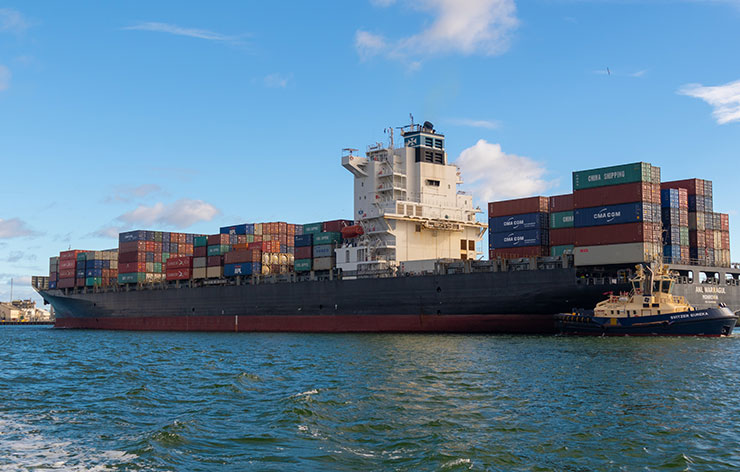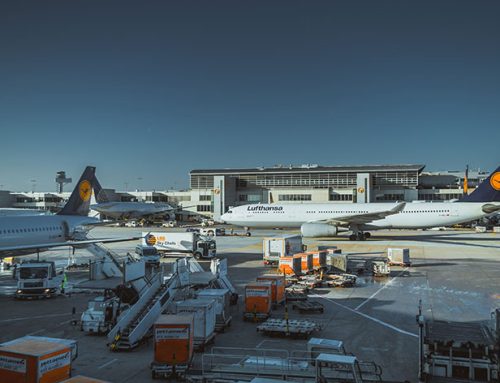What Is Carriage Paid To (CPT)?
Carriage Paid To (CPT) is an international trade term that means the seller delivers the goods at their expense to a carrier or another person nominated by the seller. The seller assumes all risks, including loss, until the goods are in the care of the nominated party.
The carrier could be the person or entity responsible for the carriage (by sea, rail, road, etc.) of the goods or the person or entity enlisted to procure the performance of the carriage. The CPT price might include Terminal Handling Charges (THC) in their freight rates.
KEY TAKEAWAYS
- Carriage Paid To (CPT) is an international commercial term (Incoterm) denoting that the seller incurs the risks and costs associated with delivering goods to a carrier to an agreed-upon destination.
- With multiple carriers, the risks and costs transfer to the buyer upon delivery to the first carrier.
- CPT costs include export fees and taxes.
- As an alternative, the buyer could opt for the Carriage and Insurance Paid To (CIP) arrangement, whereby the seller also insures the goods during transit.
- Other similar transport arrangements between a buyer and seller include Cost, Insurance, and Freight (CIF) and Delivered Duty Paid (DDP).
Understanding Carriage Paid To (CPT)
Carriage Paid To (CPT) is an Incoterm, which is a set of standardized international trade terms that are published by the International Chamber of Commerce.1
In a CPT transaction, the seller must clear the goods for export and deliver them to a carrier or appointed person at a mutually agreed-upon (between the seller and buyer) destination. Also, the seller pays the freight charges to transport the goods to the specified destination.
The risk of damage or loss to the goods is transferred from the seller to the buyer as soon as the goods have been delivered to the carrier. The seller is responsible only for arranging freight to the destination and not for insuring the shipment of the goods during transport.
The term CPT is typically used in conjunction with a destination. For example, CPT Chicago means that the seller pays freight charges to Chicago.
Example of Carriage Paid To (CPT)
The responsibility for freight costs also includes export fees or taxes required by the country of origin. However, the risk is transferred from the seller to the buyer as soon as the goods are delivered to the first carrier, even if multiple means of transportation (land, then air, for example) are employed.
So if a truck carrying a shipment to the airport encounters an accident in which the goods are damaged, the seller is not responsible for damages if the buyer has not insured the products because the goods had already been transferred to the first carrier: the truck.
This can put the buyer at some risk in that the seller has an incentive to find the cheapest means of transportation without any special concern for the safety of the product while in transit. To offset this risk, the buyer may consider a Carriage and Insurance Paid To (CIP) agreement, by which the seller also insures the products during transit.
The seller may also choose an interim place to deliver the goods, rather than to the buyer’s final destination, provided it has been mutually agreed upon beforehand by the seller and buyer. The seller only pays freight charges for delivery to this interim place. This situation may arise if the buyer can arrange for freight to the eventual destination at a significantly cheaper rate than the seller or if the goods are in such demand that the seller can dictate terms.
Advantages and Disadvantages of Carriage Paid To (CPT)
The advantages and disadvantages of CPT depend on which side of the transaction you are on: the buyer or the seller. The advantage of CPT for the buyer is that it significantly reduces the risk of transporting goods. Conversely, this increases the risk of transporting goods for the seller as they are responsible for any loss or damage until the goods are in the hands of the carrier.
CPT, though, could have an advantage to a seller in that it might make the buyer more inclined to make a purchase. For example, if the buyer is looking to purchase a product but is hesitant due to the risks of transportation from a supplier far away, they may not make the purchase or they might make the purchase from a supplier that is closer but not necessarily better. If a supplier takes on the responsibility of all expenses till they reach the carrier, reducing the risk for the buyer, the buyer may be more inclined to make the purchase.
CPT is also advantageous to the buyer because it removes the hassle of all paperwork and bureaucracy. The seller would handle all the legal aspects of shipping the goods, such as arranging the carrier, taking care of customs duties, taxes, and other formalities related to exporting the goods.
Pros
- Reduces the transportation risk for the buyer
- Helps the seller make a sale by assuming a larger portion of the transportation risk
- Buyer not responsible for handling export requirements and export fees
Cons
- Increases the risk for the seller
- If shipping by sea or air, higher risk for the buyer because the buyer assumes risk from point of first carrier, usually a truck
- Buyer responsible for transit clearance
CPT vs. Cost, Insurance, and Freight (CIF)
Cost, Insurance, and Freight (CIF) is similar to CPT but slightly different. The primary difference is that CIF only applies to maritime shipping, per Incoterms. The seller is responsible for the costs, insurance, and freight for transporting goods up until they are loaded on the shipping vessel at port. From that point on, the responsibility is with the buyer.
There are a total of 11 Incoterms defined by the International Chamber of Commerce (ICC).2
CPT, on the other hand, covers a variety of shipping methods, such as land and air, including maritime, and holds the seller accountable only till the goods are transferred to the first carrier in the transportation process.
CPT FAQs
What Is the Difference Between CIF and CPT?
CPT stipulates that the seller is responsible for all expenses and risks of the transportation of goods up until the goods are delivered to a carrier. CIF applies to maritime shipping and stipulates that the seller is responsible for all expenses, including insurance, and risks until the goods are loaded onto the vessel at port.
What Does CIP Mean in Shipping Terms?
CIP in shipping means that the seller is responsible for the expenses of transporting goods, including insurance, until the goods are delivered to the first carrier, whereupon the buyer assumes responsibility. In shipping, if the ship is the first carrier when the goods are delivered to the shipping vessel, that is when the buyer assumes the risk. If the goods need to be transported via truck before they are loaded onto a ship, then the buyer assumes responsibility once the goods are loaded on the truck, as that is the first carrier.
What Is the Difference Between CPT and CIP?
CIP is a step further from CPT and includes insurance. CIP functions the same as CPT, in that the seller is responsible for all of the expenses and risks in delivering goods to a carrier, but with CIP, insurance is added to insure the goods.
What Is the Difference Between DDP and CPT?
DDP, or Delivered Duty Paid, stipulates that the seller is responsible for all of the risks and costs associated with transporting goods until they are received by the buyer at the point of destination. This differs from CPT in that CPT stipulates that the seller is responsible until the goods are received by the first carrier, which can be before the buyer receives them. DDP takes it further where the risks and costs are with the seller until the buyer is in receipt of the goods after all transport is complete.
The Bottom Line
The International Chamber of Commerce (ICC) outlines a variety of transportation terms that vary in the degree of responsibility held by either the buyer or the seller. Carriage Paid To (CPT) places the majority of the responsibility and cost on the seller, as it stipulates that the seller must absorb all costs and risks until the goods are transported to the first carrier in the transportation chain.





Leave A Comment